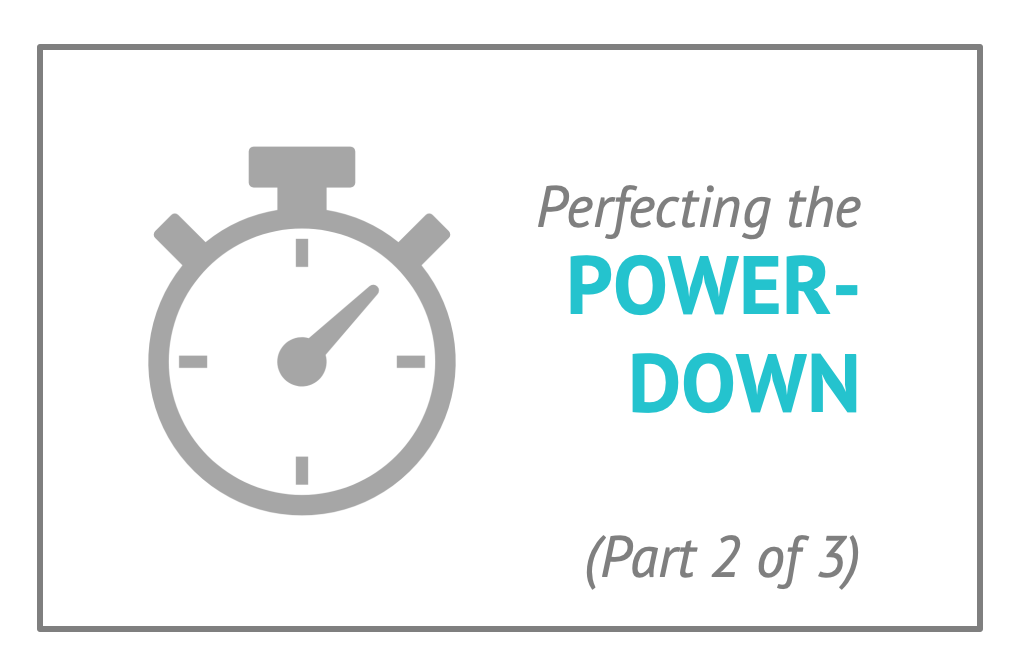To get the Compound Return newsletter in your inbox, subscribe here.

Last month, I sent along six tried-and-true methods for “de-screening” – getting your head out of device mode and back into the real world. We all seem to experience that compulsive loop of using our devices, finding ourselves checking email or headlines or whatever for the 74th (or 435th) time in one day. It’s not pretty. Nearly one in four adults reports that they are online all the time. One quarter of children/young people are classified as internet addicted. The average American spends more than 10 hours per day on screens. And that’s all pre-pandemic.
And yes, it does actually scramble our brains. One research overview on the subject notes that multitasking is shown to impair cognitive performance – and what is internet/device usage besides mostly multitasking? But it gets darker from there:
“Potential harmful effects of extensive screen time and technology use include heightened attention-deficit symptoms, impaired emotional and social intelligence, technology addiction, social isolation, impaired brain development, and disrupted sleep.”
Plus, pandemic!
If we’re all going to be virtual workbots for the foreseeable future, this transition back to non-device-brain seems like an especially important thing to manage. That’s why we need the transition methods – whether that’s playing your guitar for a few minutes or joining the kids for some paint-by-number watercolor turtles that you’ll be tossing straight into the recycling bin.
Working for You or Against You? Brain Momentum
I think the methods are only half of the equation though. I’ve also periodically hunted through research to see if there’s a good study that demonstrates how long it takes for your brain to switch gears like this, from spastic digital mode back to calmer analog mode. Is it a 3-minute switch? 18 minutes? An hour?
But my searches on the topic have come up dry. There are several commonly cited studies which note how long it takes to get your focus back on a task after you’re distracted (around 25 minutes on average according to this one, and another study by the same researcher says it’s 32 minutes if you were distracted by something external, 34 minutes if you interrupted yourself!). Fascinating, but that’s not quite the same question.
However, that second study notes that people create more self-interruptions in an hour following many external interruptions. Their brains won’t chill. On the flip side, the researchers also observed that people self-interrupt less as the day goes on – they get into their work flow for longer and longer stretches. In other words, there’s a momentum factor to attention.
What’s the Magic Number for Brain Switching?
Okay, so devices and the internet inspire compulsive behavior, and our attention seems to have a momentum factor going – no wonder it can be so hard to power down. That still leaves us without a clear answer for how long the brain transition takes. How am I supposed to set a timer to guide my power-down if I don’t have a time??
In the absence of an answer, I offer you a fruit: the tomato method of internet fame. (The internet is pretty darn useful, after all.) The Pomodoro Technique, named after the Italian word for tomato, is super simple: use a timer to do 25 minutes of task, followed by 5 minutes of break. Together, the two phases make a full Pomodoro. Maybe our daily digital power-downs deserve a Pomodoro? The inventor named his method after his tomato-shaped timer, which adds a little whimsy to the whole thing.
25 minutes seems like a reasonable brain-transition time, once you consider what an undertaking it is. The real beauty comes in setting a timer that you can’t watch – I like to either shout the instruction at our Alexa speaker, or set my FitBit to buzz on my wrist after 25 minutes. I find the 25 minutes is always more than I need; by the time the alarm rings, I’ve forgotten all about it because my watercolor turtles are really shaping up.
Alternately, you could consider using the 5-minute end of the Pomodoro; the CEO of Instagram claims that’s the time it takes him to get into a task. But this might not be the thing to rush. There’s a lot of digital stress to undo at the end of a pandemic workday. Better to get your cozy stuff on and let the tomato work its magic.
Watch for part 3 of this series next month!
Looking for a freelance financial writer to take on some of your Pomodoros? Reach out and let’s talk about your project needs.
Carolyn is a freelance financial writer with 15+ years of experience in financial services. She holds an MBA from the University of Chicago Booth School of Business and is a CFA charterholder. She writes from Washington D.C.
Posted By
Carolyn
Categories
Compound Return Newsletter, Content Marketing, Freelance financial writer, Freelance financial writer